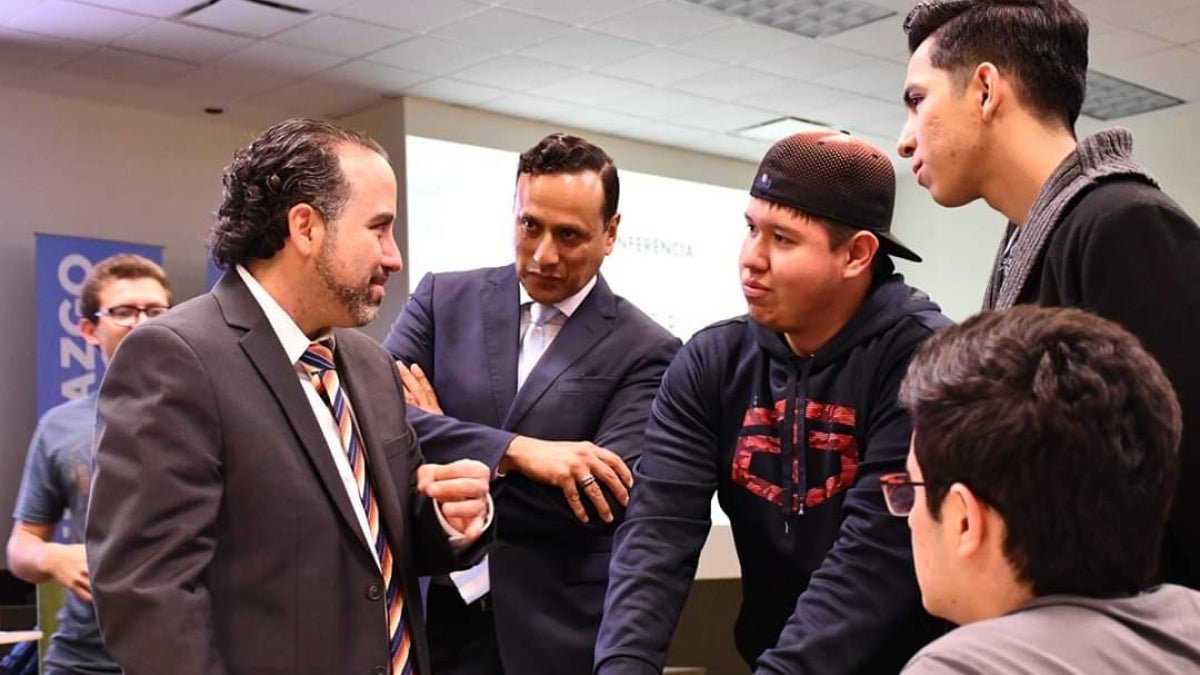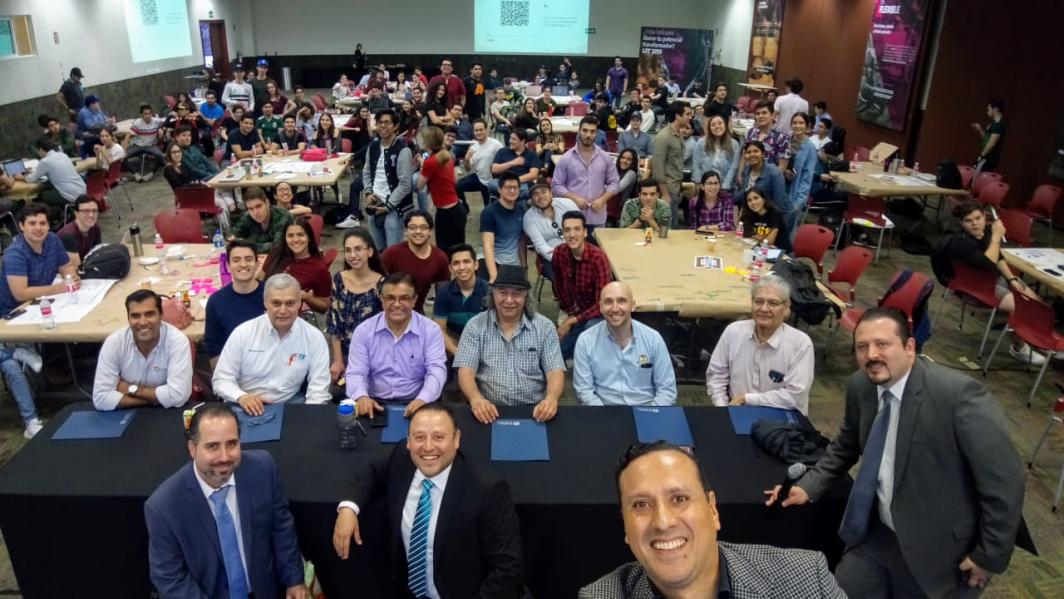Students mobilize their research on water solutions in the Sonora-Arizona desert

Enrique Vivoni (left) speaking to a group at the knowledge mobilization event.
The dry, arid climate of the Sonoran Desert has created harsh living conditions for several millennia. This forces local dwellers to use traditional knowledge about the environment and sustainability in order to help their vibrant communities flourish. Even with today’s advances, the low availability of water in the region continually leads to the necessity for new technological innovations that yield more efficient use of more diverse sources of water.
As centers for innovation, universities in the Arizona-Sonora megaregion, that area of the Sonoran Desert that spans the U.S. and Mexico, play a central role in both creating knowledge and in mobilizing it to society. Knowledge mobilization is the process by which advances are disseminated, adopted and refined when placed in a real-word context.
This process was recently illustrated in a collaboration between Arizona State University and Tecnológico de Monterrey during a two-day water solutions workshop in Hermosillo, Mexico. The workshop was tailored to 163 engineering students whose objectives were to develop a solution, document the impact it would have and make this accessible to others.
“Arizona and Sonora share common problems related to natural resources which can be more effectively addressed using a regional approach,” said Enrique R. Vivoni. “Since our two universities are training students to be innovators, it is natural to work on joint solutions to shared problems.”
Vivioni, a professor in the School of Earth and Space Exploration and the School of Sustainable Engineering and the Built Environment, is the associate dean of the ASU Graduate College and participated in the workshop.
Students and faculty scrutinized the arid climate of Sonora and Arizona and how it presents the opportunity to develop water innovations for the agricultural, urban and industrial sectors. With nearly 9 million inhabitants, the Sonora-Arizona megaregion is a fertile ground for emerging technologies that can lead to water conservation and sustainable economic development.
“Through these workshops, we exposed students from our industrial and innovation engineering programs to team-based problem solving and entrepreneurship,” said Alejandro Sandoval Correa, director of the School of Engineering and Sciences at Tecnológico de Monterrey’s Campus Sonora Norte.
Eighteen student teams, consisting of eight to 10 members, used communication strategies such as concept sketches, benefit-cost analysis and product pitches to conceptualize and present ideas for products that solve a specific water challenge in the region.
“Student competitions centered around a challenge are an effective way of mobilizing knowledge and stimulating creative solutions to a societal problem,” Vivoni said. “In this case, our research activities over the past 15 years in Sonora were mobilized as well to provided context for student-driven innovations.”
The activity promoted student competencies toward earning a degree for the engineering curriculum at Tecnológico de Monterrey, including active participation in multidisciplinary teams and the evaluation of the social, economic and environmental consequences of engineering projects.
At the end of the workshop, three student teams were selected as top innovators in the categories of agricultural, urban and industrial solutions. Two members from each winning team will present their efforts at ASU on Friday, May 24, to a group of students and faculty from the School of Sustainable Engineering and the Built Environment.
The Sonora-Arizona desert event with Arizona State University and Tecnologico de Monterrey.
“Our programs at Campus Sonora Norte will continue to benefit from interactions with universities in Arizona, especially in the areas of sustainability, engineering and regional development. We are looking to Arizona State University as a long-term partner for a wide range of student engagement, research and academic activities,” Sandoval said.
As a tide of momentum continues to rise between institutions of higher education in the Sonora-Arizona megaregion, the opportunity for further innovation continues to entertain the goals that are being pursued by the governors of each state through the Arizona-Mexico Commission. The commission’s 60th anniversary summit will be held June 26–28 in Phoenix. Additional efforts are underway to link universities through the Arizona-Sonora Interuniversity Alliance, established in 2017 to foster knowledge, innovation and education.
“We hope that efforts such as these can create opportunities for further collaboration through graduate degree programs, joint research projects and public engagement across communities,” Vivoni said.
More Environment and sustainability

Researcher works on changing people's mindsets to fight climate change
Meaningful action to heal the climate requires a complete shift in the way people think and perceive each other, according to an…

NOAA, ASU offer workshop to bridge ocean exploration, education
Oceans are vital to sustaining life on Earth, as they produce over half of the oxygen we breathe and play a crucial role in…

A united front for sustainability and the economy
When four leaders of esteemed learning institutions and the mayor of Phoenix gather in one location at the same time, it’s a tip-…
